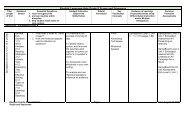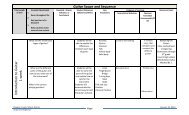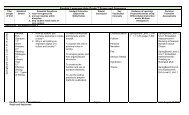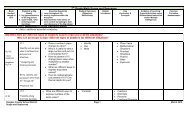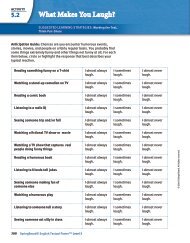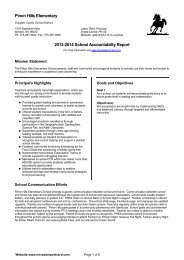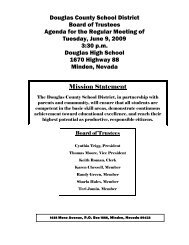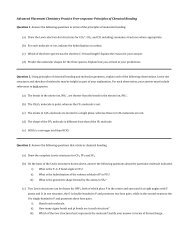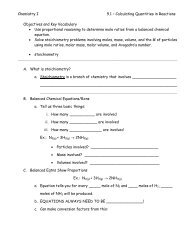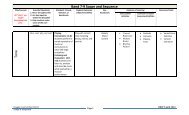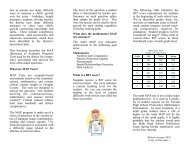DCSD Common Core State Standards Math Pacing Guide 1st Grade
DCSD Common Core State Standards Math Pacing Guide 1st Grade
DCSD Common Core State Standards Math Pacing Guide 1st Grade
Create successful ePaper yourself
Turn your PDF publications into a flip-book with our unique Google optimized e-Paper software.
<strong>DCSD</strong> <strong>Common</strong> <strong>Core</strong> <strong>State</strong> <strong>Standards</strong> <strong>Math</strong> <strong>Pacing</strong> <strong>Guide</strong><br />
<strong>1st</strong> <strong>Grade</strong><br />
4 = 12, one knows 12 – 8 = 4); and creating equivalent<br />
but easier or known sums (e.g., adding 6 + 7 by creating<br />
the known equivalent 6 + 6 + 1 = 12 + 1 = 13).<br />
Work with addition and subtraction equations.<br />
7. Understand the meaning of the equal sign, and<br />
determine if equations involving addition and<br />
subtraction are true or false. For example, which of the<br />
following equations are true and which are false 6 = 6, 7 =<br />
8 – 1, 5 + 2 = 2 + 5, 4 + 1 = 5 + 2.<br />
NBT: Number and Operations in Base Ten<br />
Understand place value.<br />
2. Understand that the two digits of a two-digit number<br />
represent amounts of tens and ones. Understand the<br />
following as special cases:<br />
a. 10 can be thought of as a bundle of ten ones — called<br />
a “ten.”<br />
b. The numbers from 11 to 19 are composed of a ten and<br />
one, two, three, four, five, six, seven, eight, or nine<br />
ones.<br />
c. The numbers 10, 20, 30, 40, 50, 60, 70, 80, 90 refer to<br />
one, two, three, four, five, six, seven, eight, or nine<br />
tens (and 0 ones).<br />
3. Compare two two-digit numbers based on meanings of<br />
the tens and ones digits, recording the results of<br />
comparisons with the symbols >, =, and



